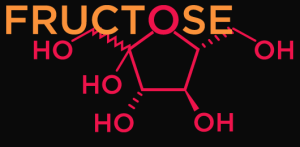Is Fructose Fattening?
 Another study adds to growing concerns that dietary fructose may be more likely to promote weight gain and contribute to type 2 diabetes mellitus (DM) compared with other sources of dietary carbohydrates. In this new study, researchers used an MRI to measure blood flow in 20 healthy, normal-weight adult volunteers before and after drinking a 75 g beverage containing either glucose or fructose. They observed that glucose (but not fructose) ingestion reduced activation of parts of the hypothalamus associated with hunger. Glucose ingestion also increased functional connections between the hypothalamic-striatal network, which are also known to increase ratings of satiety and fullness. The results of the MRI scan data were consistent with how hungry the subjects said they felt after consuming drinks with different sugars. [Page KA, Chan O, Arora J, et al. Effects of fructose vs glucose on regional cerebral blood flow in brain regions involved with appetite and reward pathways. JAMA 2013; 309:63-67].
Another study adds to growing concerns that dietary fructose may be more likely to promote weight gain and contribute to type 2 diabetes mellitus (DM) compared with other sources of dietary carbohydrates. In this new study, researchers used an MRI to measure blood flow in 20 healthy, normal-weight adult volunteers before and after drinking a 75 g beverage containing either glucose or fructose. They observed that glucose (but not fructose) ingestion reduced activation of parts of the hypothalamus associated with hunger. Glucose ingestion also increased functional connections between the hypothalamic-striatal network, which are also known to increase ratings of satiety and fullness. The results of the MRI scan data were consistent with how hungry the subjects said they felt after consuming drinks with different sugars. [Page KA, Chan O, Arora J, et al. Effects of fructose vs glucose on regional cerebral blood flow in brain regions involved with appetite and reward pathways. JAMA 2013; 309:63-67].
The results of this study, coupled with earlier research on human subjects and animals, suggests that dietary fructose may provide considerably less satiety per calorie than other sources of dietary carbohydrates. This appears to be particularly true when the fructose is consumed as a beverage. While all sugars have about the same number of calories per gram, there is growing evidence that fructose has different effects on metabolism and satiety that may contribute to weight gain compared to other sources of dietary carbohydrates. Unlike glucose, fructose does not stimulate insulin release and has relatively little immediate impact on blood sugar levels, both of which are known to increase activity in the brain's satiety centers. In addition, large amounts dietary fructose stimulates fat synthesis in the liver and tends to raise both serum triglyceride and LDL-C levels. Fructose also increases uric acid levels and appears to increase insulin resistance relative to the consumption of starch or glucose and so may contribute to the development of both type 2 DM and cardiovascular disease (CVD).Table sugar (aka sucrose) is half fructose and half glucose. High-fructose corn syrup (HFCS) is typically 55 percent fructose and 45 percent glucose, but can be as high as 90% fructose. The evidence is leading more nutritionists to suspect that dietary fructose may pose unique metabolic risks not seen with other dietary sources of carbohydrate. It may not be a coincidence that the incidence of obesity has increased along with the increased consumption of fructose -- largely as HFCS-sweetened drinks -- over the past 50 years.Bottom Line: This study adds to mounting evidence from epidemiologic, metabolic-feeding, and animal studies that the increasing consumption of fructose may well be contributing to weight gain and host of other metabolic changes associated with the development of type 2 DM and CVD.By James J. Kenney, PhD, FACN
